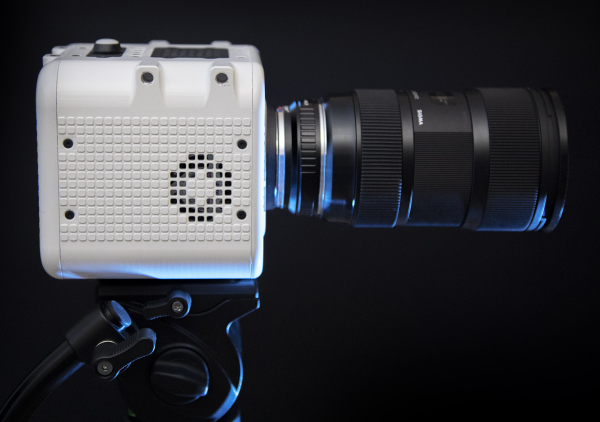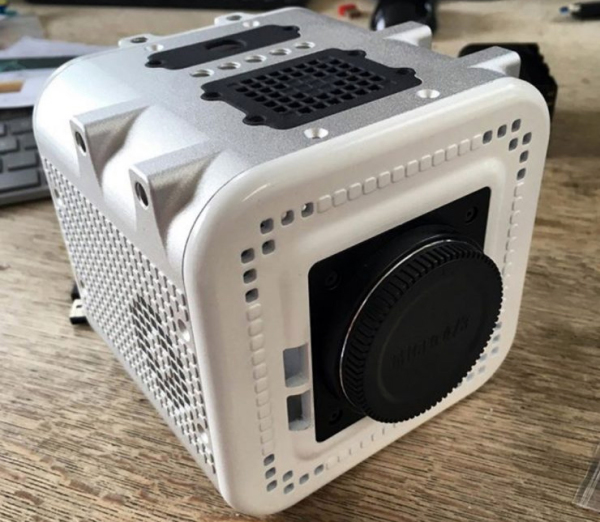We already reported about  the Octopus camera one and a half years ago and since then there hasn't been much movement. But apparently there is still life in the camera, which is supposed to consist primarily of freely available components.
the Octopus camera one and a half years ago and since then there hasn't been much movement. But apparently there is still life in the camera, which is supposed to consist primarily of freely available components.
The heart of the camera is still an old Intel NUC board (NUC 8V7PNB). The operating system is to be based on Linux and the sensors are to be available in a selection of types right from the start. Meanwhile, a CMOSIS 8K FULL FRAME sensor (CMV50000) has been added as the top model, which is supposed to achieve up to 14 levels of dynamic range with 7920 x 6004 and global shutter. This is said to be able to record 4K RAW at up to 60 fps and 8K RAW at up to 42 fps (10 bit HEVC, Lossy RAW or 12 bit Lossless External via Thunderbolt 3). Alternatively, there is said to be a 14 BIt Lossless RAW mode capable of recording 4K up to 30fps, 3K up to 60fps and 2K up to 110fps.

The design and dimensions (110 x 110 x 110mm, <1kg) are reminiscent of Red/Kinefinity/Z-Cam models and prove that you can't go wrong with an unergonomic box shape in the cine sector.
And our "Aaaber" already voiced 18 months ago still applies: We think that with the Octopus Cam, the development effort on the software level has once again been clearly underestimated. If you look at the last available demo material from April 2020, you can assume that there is still a lot of work to be done:
We therefore quote ourselves at this point:
"Getting a NUK board on a battery to take a video stream from a sensor under Linux does not make a commercially successful camera. If you have followed the bumpy, five-year road it took Blackmagic, for example, to develop a round camera surface, you can guess that the final step from a running hardware prototype to a practically usable camera is extremely large.
(...)
It is even more true for such projects that they are primarily interesting for hobbyists who want to tinker (and learn!) a lot with their camera. (...) Only in special niche areas are such "hobby cameras" also used in real productions."
What the Octopus camera will ultimately cost - if it should really come onto the market in 2021 with a delay of more than a year - is likely to be decisive for its fate. Because there are already some very potent, fully developed 8K cameras available this year. And such cameras as the Sony Alpha 1, for example, come to the customer practically ready to shoot with viewfinder etc..
That's why the Octopus would probably have to be priced at least below 3,000 euros in order to be able to sell a reasonable number of units to buyers who are willing to take a risk. But for manufacturers of small-series cameras, sensors are usually more expensive to buy than the price of a complete camera with the same sensor in an electronics retailer. All this is not likely to be easy, but we will be glad to be convinced as soon as there are finished prototypes.


